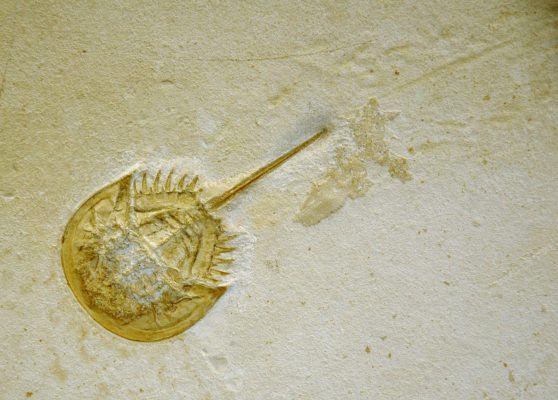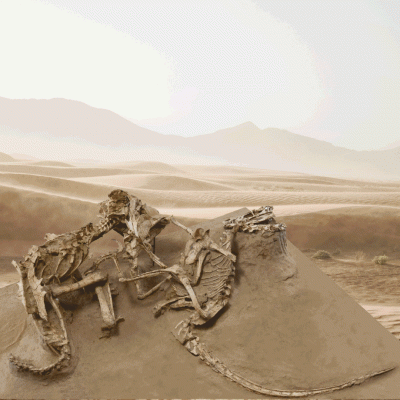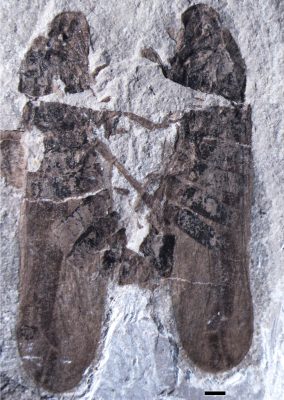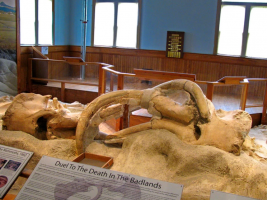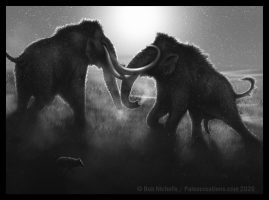Five Extraordinary Discoveries That Will Change the Way You Look at Fossils Forever
By Dr. Dean R. Lomax
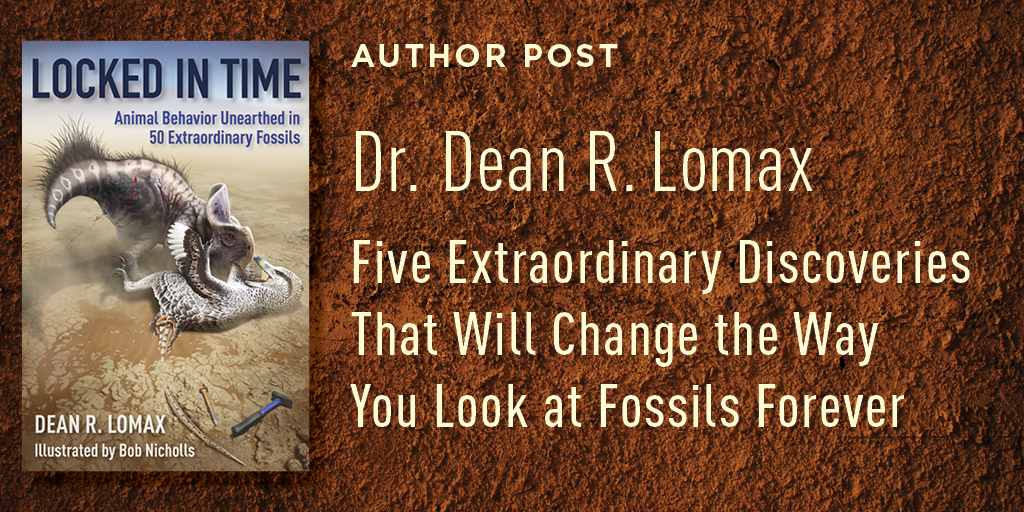
Fossils allow us to picture the forms of life that inhabited the earth eons ago. But we long to know more: How did these animals actually behave? From dinosaurs fighting to their deaths to elephant-sized burrowing ground sloths, Locked in Time: Animal Behavior Unearthed in 50 Extraordinary Fossils takes readers on a global journey deep into the earth’s past. In the following post, the author, Dr. Dean R. Lomax, guides us through his top five fascinating fossils that shed light on prehistoric animal behavior.
• • • • • •
1. A 150-million-year-old horseshoe crab found dead in its tracks
There are two major types of fossils, body fossils and trace fossils. Body fossils are the physical remains of an animal, such as bones, teeth, and shells, whereas trace fossils record evidence of an animal’s activity, such as tracks, burrows, and coprolites. Conclusively matching a body fossil with a trace fossil is practically impossible unless you have them preserved together. These types of fossils are among the rarest of all.
An extraordinary fossil of a juvenile horseshoe crab collected from the famous Jurassic limestones in Germany, near the village of Solnhofen, records a spectacular 9.7-meter trackway with the horseshoe crab literally dead in its tracks. I first saw this specimen in 2008, while volunteering at the Wyoming Dinosaur Center, and described the fossil a few years later in a scientific research paper. The very fact that this entire moment from millions of years ago was preserved here for all eternity astonished me. It had such a profound impact that it changed the way I thought about fossils and gave me the idea for a book about prehistoric behavior.
2. Dinosaurs fighting to their death
Arguably one of the most famous dinosaur discoveries of all time, a Velociraptor and Protoceratops forever locked in combat. This pair of fighting dinosaurs was discovered in 1971, deep in the heart of the Gobi Desert in southern Mongolia. As preserved, the Protoceratops has its tough beak firmly clamped down on the right arm of the Velociraptor, but the Velociraptor’s famous sickle-shaped foot claw is positioned high and deep within the throat region of Protoceratops. This unique and spectacular fossil captures an incredible moment in time, 75 million years ago. As a dino-crazed kid, I remember reading books and watching TV shows that featured this remarkable fossil. It just had to be on the cover of Locked in Time.
3. A pregnant ichthyosaur giving birth
Ichthyosaurs are a group of extinct, superficially dolphinlike marine reptiles. Remarkably, many ichthyosaurs have been discovered with embryos preserved inside. Most of these superb fossils come from Jurassic quarries near the town of Holzmaden, Germany, where over 100 pregnant ichthyosaurs have been discovered. The most spectacular individual captures the tragic moment when one of her four embryos became stuck in the birth canal with only its head still remaining inside the mother. Most of my academic career has been spent studying thousands of ichthyosaurs, including researching and describing pregnant specimens.
4. Jurassic insects having sex
Fossils of animals caught “doing it” would seem almost impossible, and yet there have been a few incredibly rare examples discovered. The earliest pair of mating animals are two froghopper insects perfectly preserved in a 165 million-year-old Jurassic rock from Inner Mongolia, northeastern China. They are lying together face to face; the male’s long tubelike aedeagus is inserted directly into the female’s saclike bursa copulatrix. This is not quite the same as the male and female genitalia found in mammals, but you get the point. The genitalia and mating position also match those seen in modern-day froghoppers, leaving no doubt that this fossil captures Jurassic sex in action.
5. Two mammoths locked together forever
In 1962, one of the most dramatic fossil finds of all time was made in the badlands of Nebraska, unearthed from 12,000-year-old rocks: two bull Columbian mammoths fighting to their death. Each around forty years old, these adult mammoths are preserved in direct contact, with their tusks tangled together. One of them has a complete right tusk but a snapped left tusk, whereas the other has a complete left tusk but a broken right. I first read about this fossil roughly a decade ago and was surprised to learn that it was not well known, even to paleontologists. It represents a truly unique moment in time: two of the largest land mammals ever to have lived, locked in combat for all eternity.
Dean R. Lomax is an internationally recognized paleontologist, author, television presenter, and science communicator and the author of Locked in Time: Animal Behavior Unearthed in 50 Extraordinary Fossils. Bob Nicholls is a world-renowned natural history artist who specializes in the reconstruction of prehistoric animals, plants, and environments, and is the illustrator for Locked in Time.


